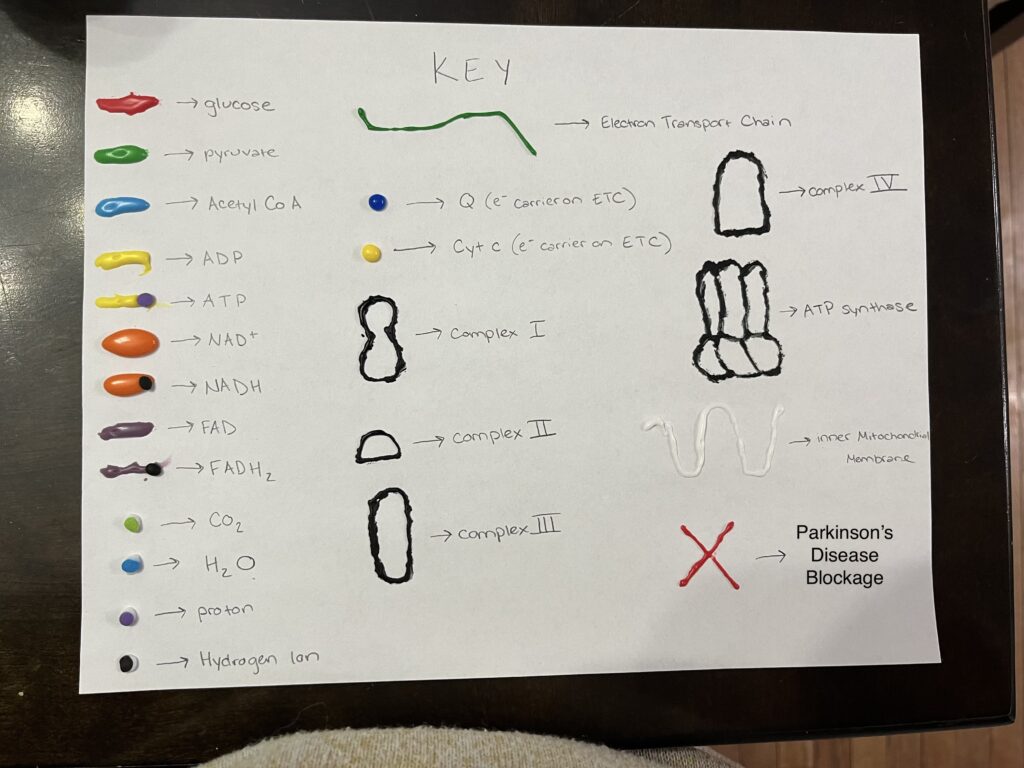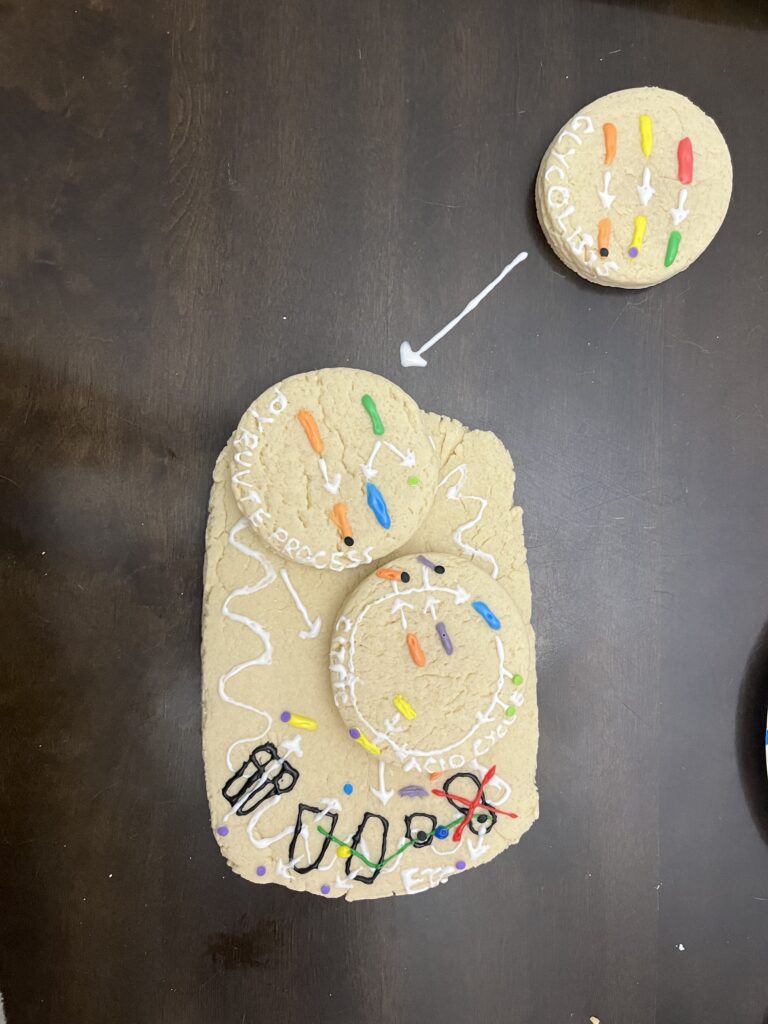Sources:
Manoj KM. Aerobic Respiration: Criticism of the Proton-centric Explanation Involving Rotary Adenosine Triphosphate Synthesis, Chemiosmosis Principle, Proton Pumps and Electron Transport Chain. Biochem Insights. 2018 Dec 25. https://www.ncbi.nlm.nih.gov/pmc/articles/PMC6311555/#:~:text=Cellular%20respiration%20is%20the%20metabolic,mitochondrial%20oxidative%20phosphorylation%20(mOxPhos)
Mayo Foundation for Medical Education and Research. (2023, May 26). Parkinson’s disease. Mayo Clinic. https://www.mayoclinic.org/diseases-conditions/parkinsons-disease/symptoms-causes/syc-20376055
Osellame LD, Blacker TS, Duchen MR. Cellular and molecular mechanisms of mitochondrial function. Best Pract Res Clin Endocrinol Metab. 2012 Dec;26(6):711-23. doi: 10.1016/j.beem.2012.05.003. Epub 2012 Jun 23. https://www.ncbi.nlm.nih.gov/pmc/articles/PMC3513836/
Perier C, Vila M. Mitochondrial biology and Parkinson’s disease. Cold Spring Harb Perspect Med. 2012 Feb;2(2):a009332. doi: 10.1101/cshperspect.a009332. PMID: 22355801; PMCID: PMC3281591. https://www.ncbi.nlm.nih.gov/pmc/articles/PMC3281591/
Sivagurunathan, N., Gnanasekaran, P., & Calivarathan, L. (2023). Mitochondrial Toxicant-Induced Neuronal Apoptosis in Parkinson’s Disease: What We Know so Far. Degenerative Neurological & Neuromuscular Disease, 13, 1–13. https://doi.org/10.2147/DNND.S361526



Abstract:
Parkinson’s Disease can be linked to a dysfunctional mitochondria and can offset cellular respiration by blocking off proper function towards the Complex I on the Electron Transport Chain. Because of this lack of function, NAHD cannot release charged ions across the mitochondrial membrane and only half as many ATP will be produced, resulting in cell damage and more severe symptoms of the disease. The research of cellular respiration and its disruption from Parkinson’s is displayed in the form of a sugar cookie with various colors of icing representing different Complex 1-4 and various chemicals. Parkinson’s disease blockage is marked as a red “X” to distinguish the area that is being directly affected. 4 cookies describe the Cellular Respiration Process: Glycolysis, Pyruvate Processing, Citric Acid Cycle and Electron Transport Chain. A white arrow shows the order that the process takes place in and where electrons are given through the different Complexes. The small cookie outside of the big cookie represents the Glycolysis process happening outside of the mitochondria, the second cookie represents the pyruvate process inside the mitochondria, the third cookie represents the citric acid cycle in the mitochondria, and the the big cookie represents the mitochondria itself. The blockage occurs over Complex 1 and that impacts the rest of the respiration process, which makes less ATP than usual and can cause cell damage over time. This is a very informative piece and much is to be learned from it.